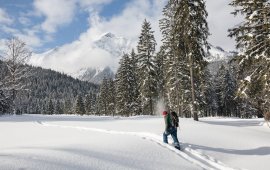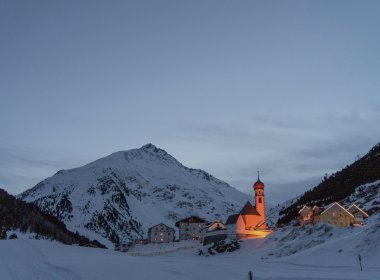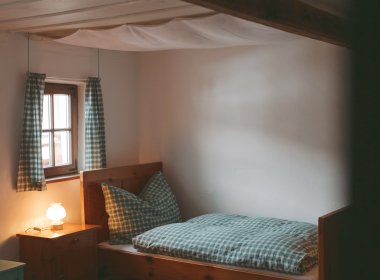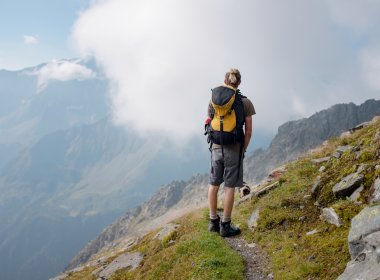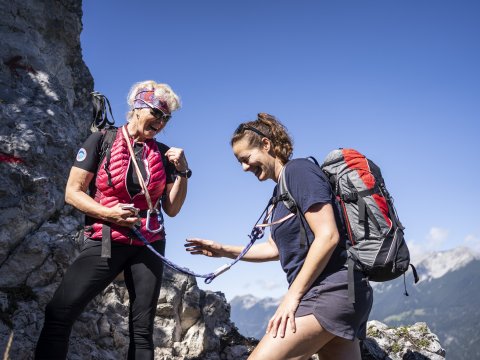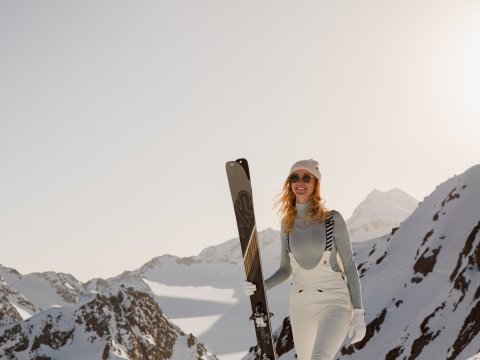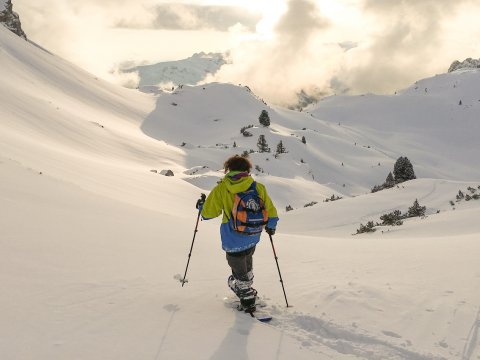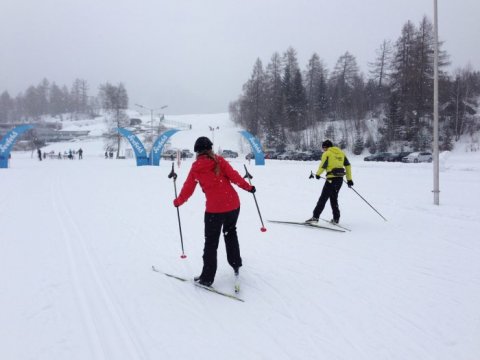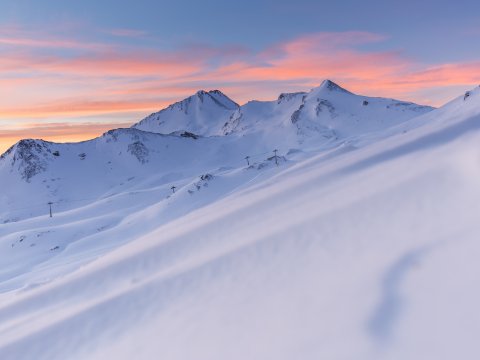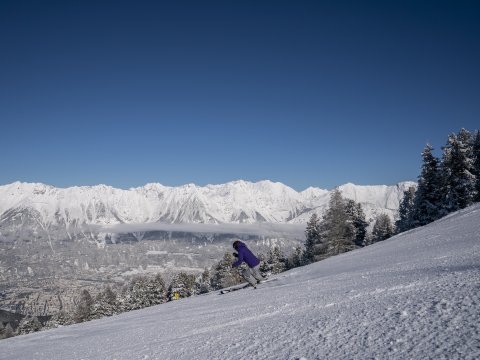Slow Shoeing
A snowshoe adventure in the mountains of East Tirol is the perfect way to get away from it all. Far from civilisation, it provides an opportunity to enjoy the wonder of winter from a different perspective and reflect on what is important in life.
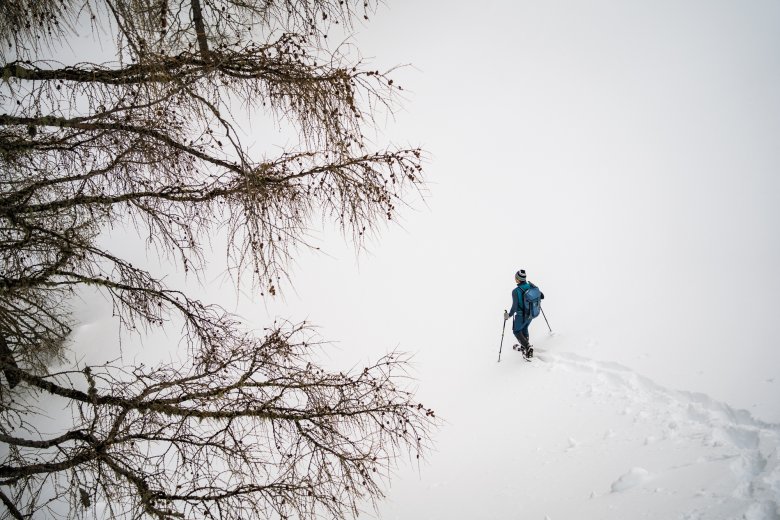
The Dolomites above Lienz, the largest town in East Tirol, are covered in a thick layer of cloud – like little lumps of cotton wool crowning the craggy peaks. I gaze out at them from my window as I strap on on my snowshoes and prepare to head out into the winter wilderness. Our accommodation is at the foot of these mighty mountains, making it the ideal basecamp from which to explore.
Tobi, our host, has kindly shovelled paths in the snow betweeen the main building, the cowshed and the Baroque chapel. The 28 year-old runs the Kollreider Hof, a centuries-old mountain farmstead which today practises organic farming and welcomes guests keen to experience a holiday on the farm. The complex of buildings is perched high above the Pustertal Valley. Running from east to west, it connects the Austrian region of East Tirol with the Italian region of South Tirol (known in Italian as Alto Adige). On winter days like today there is, I think to myself, no better place to stay if you want to experience Tirol at its most original and authentic.
Before heading off I walk over to the natural spring and fill my bottle with ice-cold mountain water. I am being joined on my adventure by Pete, our photographer. We both shoulder our backpacks and check with Tobi how to get to the Spielbichl, our destination for the day. We have also checked the latest avalance report to make sure no nasty surprises await. Let's go!
Snowshoes are roughly the size and shape of a tennis racket, designed to spread the weight of the wearer over a large area and thereby prevent him or her from sinking into the snow. Nevertheless, as we make our way into the snowy landscape we still sink in a little with every step – around 20 centimetres on a morning like today, when the snow is still cold and hard. It's a million times better than trying to complete the same route on foot without snowshoes, but we both soon work up a sweat and decide to take a break. After all, the aim of today's adventure is to take our time and enjoy the landscape. "I'm feeling more relaxed already," I say to Pete with a wry laugh as we try to catch our breath and gulp down water. I look back and see the tracks we have left in the snow – hundreds of tiny craters stamped into the virgin landscape.
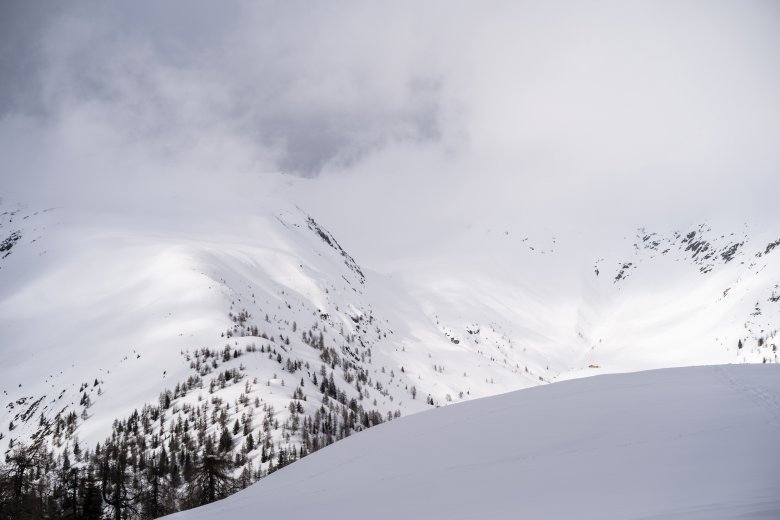
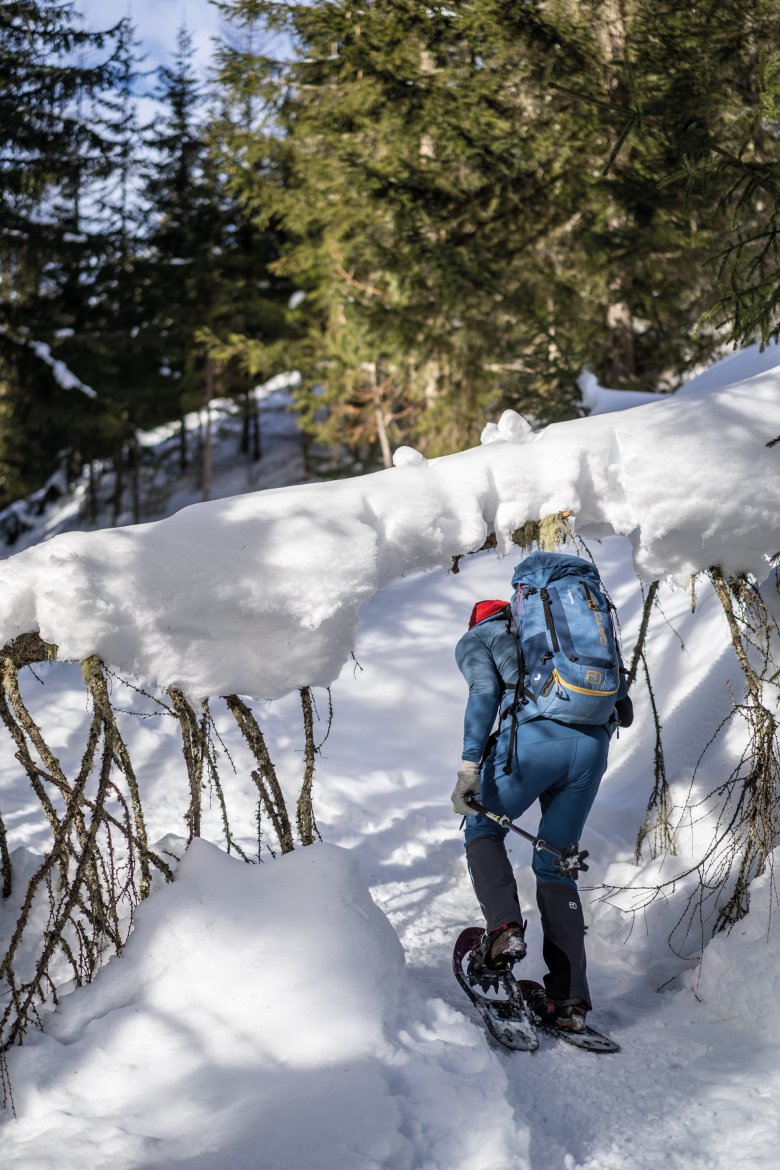
Slow and steady wins the race
The trail gently winds its way up to the Ascher Alm hut. To be honest, we can't see much of the trail itself. This winter has blessed East Tirol with a huge amount of snow – the locals say it has been one of the snowiest on record. Metres and metres of the stuff everywhere you look. Tree branches hang down under their heavy burden. The only tracks we see in the snow have been left by Tobi himself when he came up here yesterday on skis. We are grateful to be able to follow them.
Slow and steady is the motto for today. Instead of pushing the pace we are here to enjoy the landscape. It is a skill I taught to me by the British writer Robert MacFarlane. Rob is a keen climber and outdoor enthusiast who has written numerous books about walking, hiking and mountaineering. In his opinion, learning to take things slow is one of the most important skills to enjoy the environment. I think of my friend Rob as we make our way into the forest. Every time I am tempted to pick up the pace a bit, I tell myself to slow down and be more like Rob.
In fact, wearing snowshoes on out feet automatically slow us down enough to appreciate the small things you often miss when heading somewhere in a hurry. Pale green lichen blown down from the trees onto the glistening snow. Rocks surrounded by fine ice crystals. Trees, not all of them small, brought crashing to the ground by the sheer weight of the snow. Again and again we have to clamber up and over or down and under fallen trees. As we do so we can smell the unmistakeable aroma of sap and pine needles.
The only sound is that of our feet crunching through the snow. As soon as we stop we are surrounded by silence. The snows of winter act like a thick blanket, dampening noises you would otherwise hear. Sharp corners and edges disappear from the landscape. The vibrant colours of summer give way to an almost all-encompassing white, with just a few reds, blues and greens poking forth here and there.
"I can't believe how much snow they have," says Pete for what seems like the fifth time. "Mountains of the stuff," I reply with a laugh.
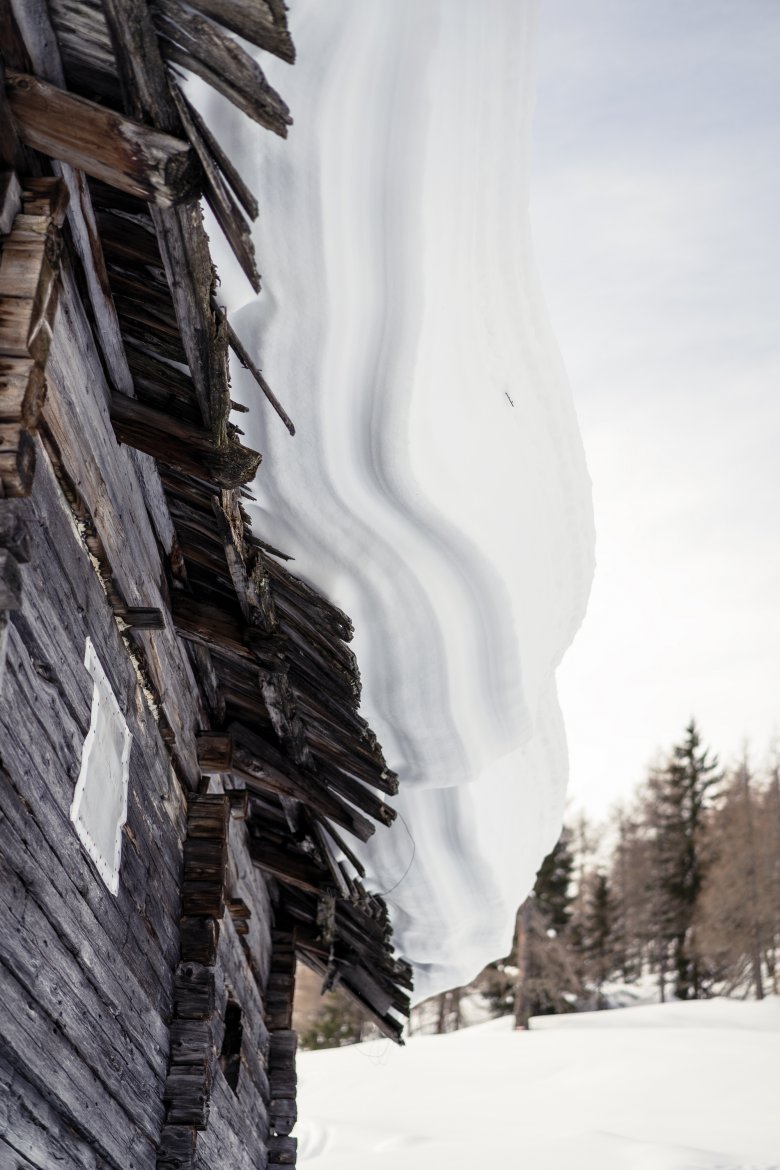
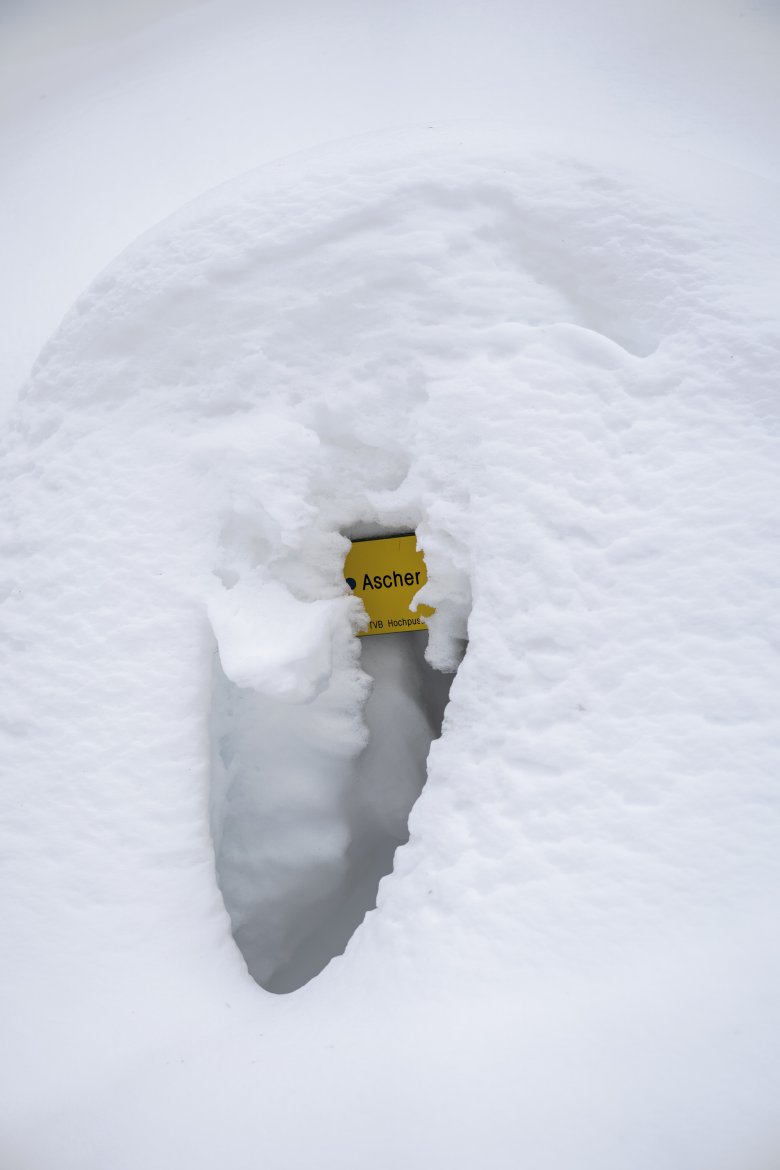
The art of observation
After an hour and a half we reach a clearing. The only thing we can see is a tiny hut almost entirely buried in snow. We make our way towards this simple refuge, following tracks in the snow probably left by a deer. The animal's hooves have sunk deep into the snow. We are lucky with our snowshoes – without them we would be up to our waists in a matter of seconds.
When we reach the hut we lean our rucksacks against the wooden walls and take off a layer of clothing. The clouds have disappeared, leaving a cobalt blue sky. Water slowly drips from the snow-laden roof. I run my hand over the rough wood and breathe in the smell of dry tar, often used to waterproof refuges in the mountains. We sit down on a wooden bench. The owner of the hut has carved Roman numerals into the large planks of wood which make up the seat and back.
Suddenly we hear a voice. Or, to be more precise, a bark. Over on the trail we have left behind we see Tobi with his dog. A pair of skis strapped to his feet, he is ski touring to the top of the local mountain topping out at 2,072 metres – a journey he makes twice a week, he tells us. "Unbelievable how fit that guy is," says Pete. For a brief instant we both feel our own sporting ambitions rising up inside us. Wouldn't it be nice to join him? But we are quick to suppress them. "Not today," I say. After all, before we set out we explicity said to ourselves that we wanted to take things easy. No training, no adrenaline, no rush. Just time to enjoy and observe.
As Tobi heads off into the distance, we pour ourselves a steaming mug of tea from our thermos flasks and let the sun warm our faces. I find myself thinking that the Villgratental Valley is the perfect place to get away from it all. Tobi is the only person we meet throughout the day. All we can hear is the sound of our footsteps in the snow and the occasional bird singing. My thoughts are drawn once again to Rob MacFarlane. An expert when it comes to birdsong, he can – unlike me – tell the difference between many birds commonly found in the mountains, from the common redpoll or the wren to the Eurasian nutcracker.
We may not be able to identify the species, but the birdsong is a pleasant soundtrack as we pack our things and head off again. Beneath our feet, the snow is around two metres thick. Every now and then we spot the top of a wooden fence or a signpost pointing the way in summer. Somewhere deep below our feet we can hear a mountain stream rushing and gurgling down into the valley. "I hope the snow doesn't give way," says Pete. I don't fancy the idea much either. Our journey continues. After around three hours of easy walking we reach the ridge overlooking the Ascher Alm hut, where we sat in the sun a little earlier. Our plan is to walk around the summit of the Spielbichl mountain. "Mountain," smiled Tobi the day before when we told him about our idea. "That's not really a mountain – more of a hill." He is right, to be fair. The top of the Spielbichl, as beautiful as it is, is rounded and rolling rather than peaked and pointy. Our eyes gaze out at across the landscape. On the horizon we see mighty mountains covered with glaciers. Truly spectacular – and enough, we soon discover, to distract us from our day's mission: appreciating the smaller things. The Alps are so beautiful, so overwhelming, that you can often find yourself simply staring at the horizon. Yet if you take your time there is so much more to discover: the hundreds of pinecones lining the ground, the smell of freshly cut grass in summer, the tracks left by hares and foxes in the fresh snow, the playful frolicking of mountain goats.
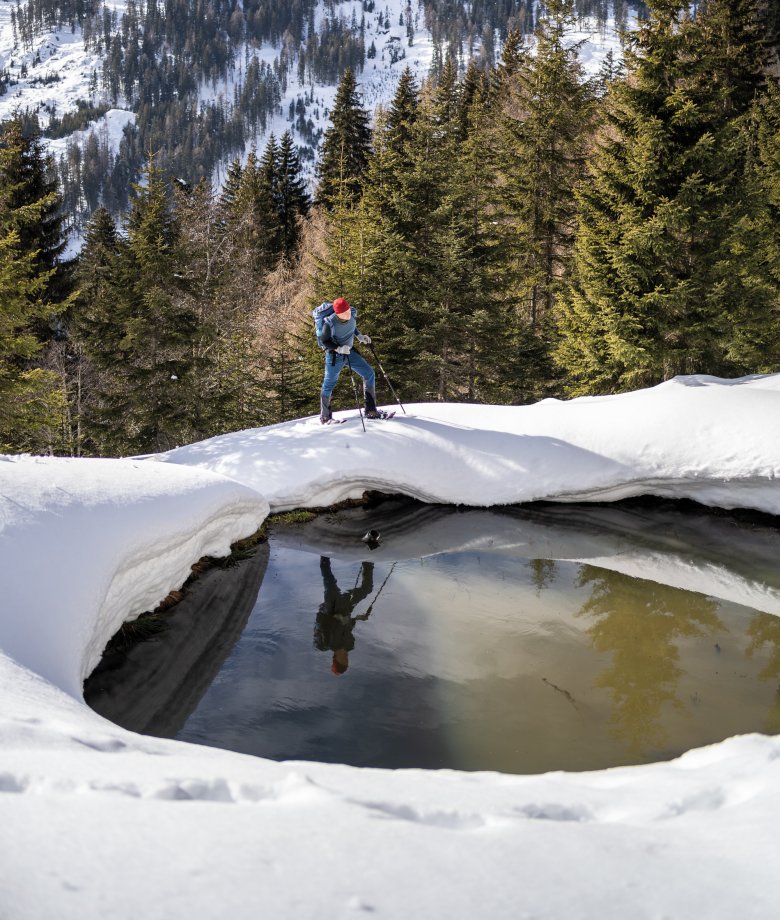

Leave no trace
We wander back down to the ridge and find ourselves faced with the first real challenge of the day. On the eastern flank of the mountain, where we were intending to descend, there are no tracks in the snow left by Tobi and his skis. It seems that only the south-facing and west-facing slopes of the mountain are suitable for skiing. We, on the other hand, are on the shady eastern side – and we're not sure where to go. The snow is virgin, so we sink even deeper than before. "Looks like we are going to get a proper sweat on today after all," laugh Pete. Soon, however, we find our feet in the new terrain. A yellow signpost buried in the snow confirms we are heading in the right direction. Phew.
We look down and see "snow snails" at our feet. These small discs occur when small pieces of snow detach from the slope and roll down, gathering snow along the way. They shimmer in white and blue. Would we have seen them if we had been in more of a hurry? I'm not so sure.
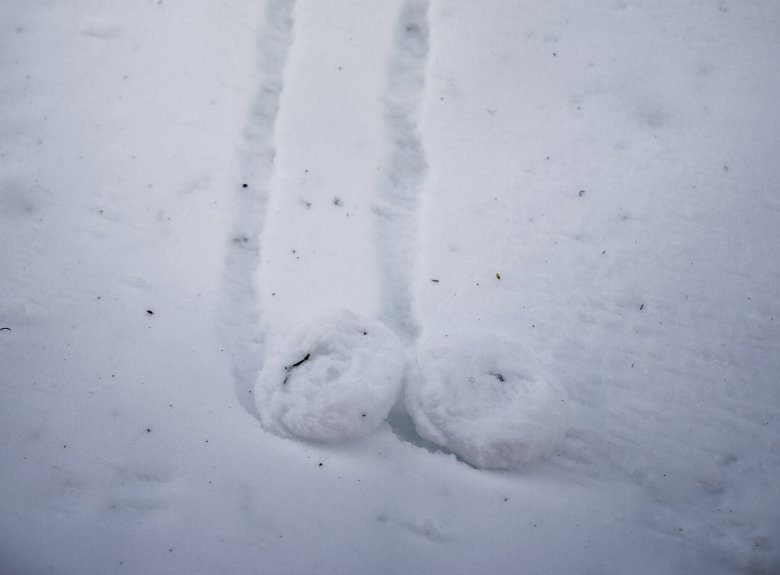
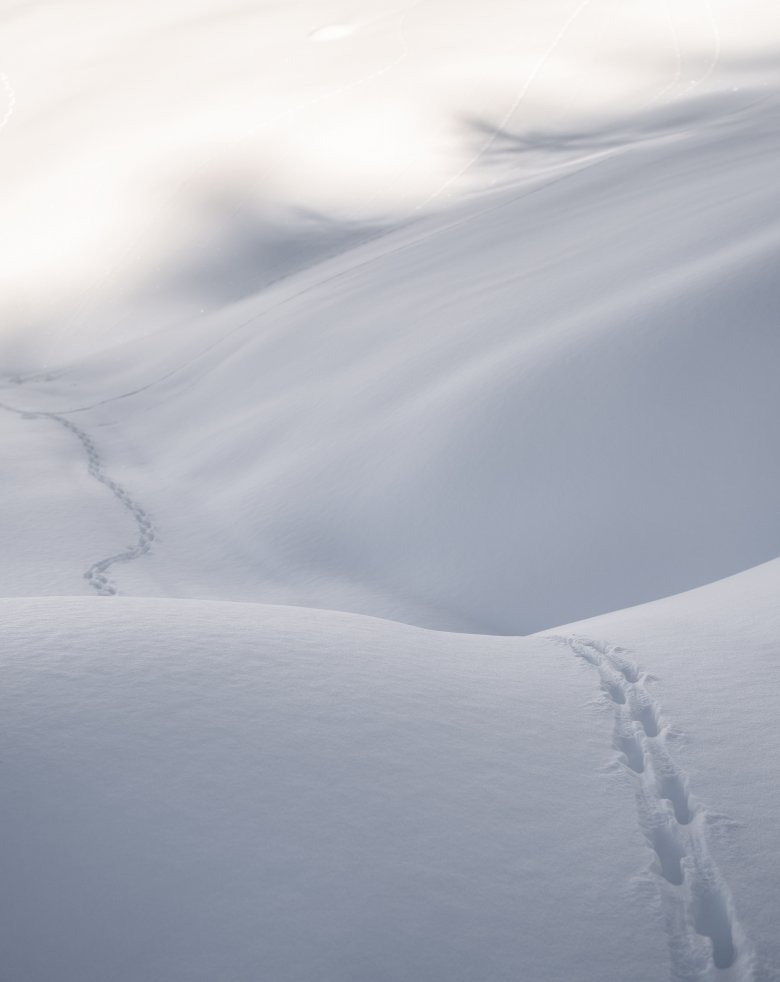
We keep moving, but the temperature is starting to drop. The sun has long disappeared behind the mountains. Before us lies a moonscape of pale blue and white. We have been out and about for seven hours. I seems our plan of slow and steady must have worked. Time, we agree, to head back to the Kollreider Hof before it gets properly dark. We arrive at about 6pm. As we approach the farmstead the lights around the Baroque chapel go on. The mountain spring, where we had filled our water bottles at the start of the day, continues to bubble and gurgle.
"You guys weren't kidding when you said you wanted to take your time," says Tobi, who got back from his ski tour hours ago. "Absolutely," I reply. I place a fire-lighter under a log of wood and can here Pete opening bottles of beer in the background. Heaven. Sometimes, we agree, it's all about the small things in life.









